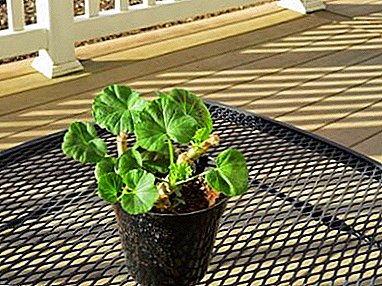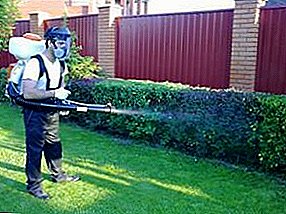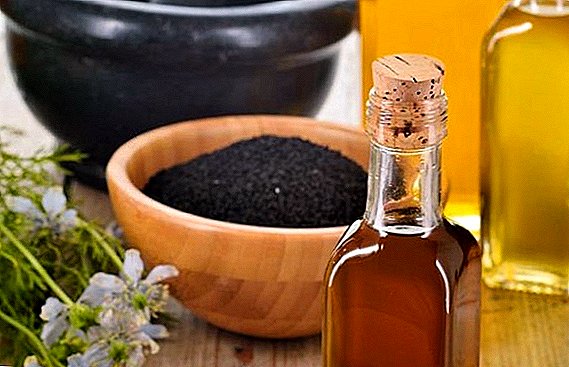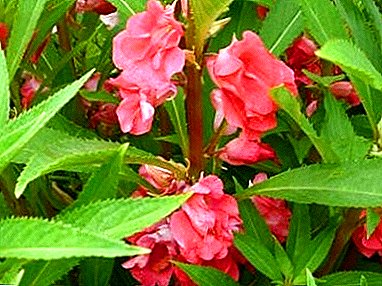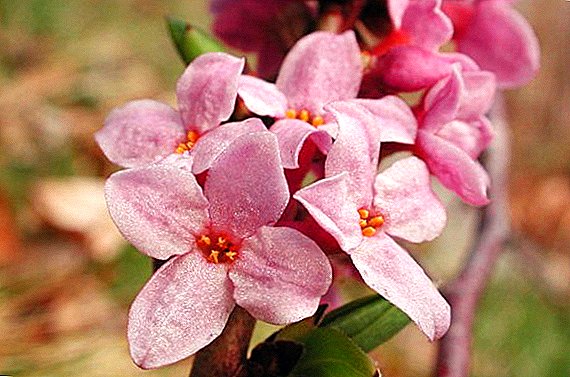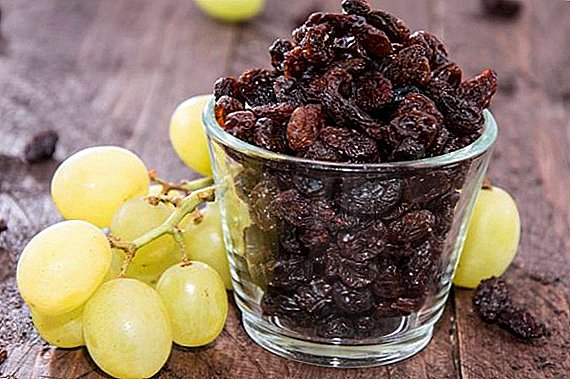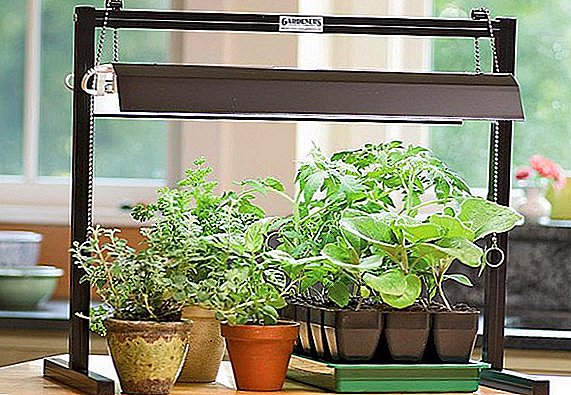 Natural lighting is one of the first places in the life of all living organisms, but not all living things can move to the right amount of time to be under the sun. It will be a question of the plants which are in a phase of active growth and need additional lighting which will be helped by lamps for seedlings to provide them.
Natural lighting is one of the first places in the life of all living organisms, but not all living things can move to the right amount of time to be under the sun. It will be a question of the plants which are in a phase of active growth and need additional lighting which will be helped by lamps for seedlings to provide them.
The importance of lighting
Everyone knows that to grow strong seedlings light is an important component. And in winter and in early spring, when new plants gain strength, the natural sunny day is rather short.

In this case, additional sources of light, such as lamps, come to the rescue. Completing the plants at home should be in accordance with the stage of development and the purpose of cultivation, because the choice must be made consciously.
Each color of the light spectrum has its own characteristic:
- red and blue - stimulate metabolic processes, increase the production of chlorophyll, accelerate photosynthesis;
- orange - speeds up fruiting, is used in winter greenhouses to accelerate the ripening of fruits;
- yellow and green are important colors during growth, they are easily reflected by seedlings;
- ultraviolet - has a bactericidal effect, inhibiting the growth of harmful organisms.
Did you know? For the first time ever lighting of plants with the help of lamps was applied in 1868. This was done by a scientist from Russia, Andrey Famintsin.
Despite the fact that each plant has its own specific requirements for the spectrum of illumination, with its lack of photosynthesis slows down, biomass grows slowly, and seedlings start to hurt. A suitable level of illumination is the limit of 8 thousand lux. Modern technologies, namely the illumination of plants at home, will help to bring seedlings as close as possible to the desired parameters and achieve illumination of 6 thousand lux.

Primary requirements
Having made the decision to grow seedlings on your own at home, it is important to know what to look for when choosing additional sources of light. Consider how requirements must meet the lamp:
- for full growth, it is better to choose devices that emit red or blue color;
- the main purpose of the source of additional light should be lighting, and not overdrying and raising the temperature of the air;
- rays of light should be soft;
- the container should be lit evenly and completely.
Particular attention should be paid to lighting when growing seedlings of pepper, tomato, parsnip, strawberries, savoy cabbage, eggplant.
To obtain high-quality seedlings, it is necessary to correctly calculate the duration of additional lighting, which will depend on the power of the device, as well as the distance from it to the surface. You can check the thermal radiation of the device by placing your hand on the surface that is illuminated, and thus feeling the heat.
Whether any, or types of lamps for lighting seedlings
Today the market is saturated with various lighting devices that help to get the right amount of light. However, many are interested in how to choose the right device for lighting seedlings and what features are popular models.
Important! Any selected type of lighting to save energy can be provided with light screens. To create them, it is enough to stick on the sides of the container with foil or plain white cardboard.
Incandescent lamp
Some people think that in order for the plants to get the right amount of light and heat, it is enough to hang a few ordinary lamps over the seedlings. However, ordinary devices do not have the necessary color spectrum for full illumination of plants.
Consuming a sufficiently large amount of electricity, they convert only 5% of the light, and the rest is converted into heat. As a result, the plants receive not light, but additional heat and, as a result, overdrying or burns on the leaves are obtained. Therefore, the use of incandescent bulbs is not as effective as the others that are gaining popularity today.

Fluorescent
Fluorescent Lamp - one of the best options for receiving an ultraviolet which is so necessary for plants. Due to this effect, intense growth of saturated color seedlings will occur. In whom this color leads to a decrease in the level of pathogenic microbes.
Additional advantages of use are the absence of high temperature at the lamp, which makes it possible to maintain the desired microclimate around the plants. Despite the positive moments, such lamps still have some drawbacks. These include the absence of the required number of waves in the red part of the spectrum.
Also, they do not have much power, and, therefore, a quick result with them cannot be obtained. To obtain the desired result, the distance from the lamp to the seedlings should be in the range of 20-30 cm. The ideal power is 40 watts.
The use of lamps for additional lighting of plants will allow you to grow arugula, tomatoes, strawberries, green onions, lemon balm and mint at home.

Sodium
Sodium lamps are considered the brightest in comparison with others. The spectrum of their radiation optimally helps plant growth. They are divided into two types: low and high pressure. The latter are used for supplementing the seedlings at home and accelerating the ripening of fruits.
Some members of this group have a mirror reflector, which allows you to cover a large area, which saves money. Negative points of use is strong heat and insecurity of use, as by production use mercury with a mixture of sodium.
These lamps cannot be switched on if voltage drops are present greater than 10%. Lowering the ambient temperature leads to a decrease in the efficiency of such lamps. Lamp power should be no more than 100 watts.
Important! Lamps with sodium lamps is strictly prohibited to include in the simple outlet. For them, you need to use special equipment, chokes and pulse-incendiary devices.

LED light
LED lamps for seedlings are gaining popularity among summer residents and farmers. Using similar lighting on seedlings leads to the following results:
- reduction of electricity consumption;
- due to minimal heating, the lamp can be placed practically near the plants;
- In the lamp are diodes of different colors, which allow you to get red and blue colors at the same time;
- high operational safety minimizes potential losses;
- lack of drying and excessive thermal humidity;
- lack of minimum infrared radiation.
Phytolamps
Phytolamps are complex devices, their price depends on the technical characteristics: power, brightness, dimensions, angle and area of illumination, heating of the case and service life. Deciding to purchase such a device and being in search of information on how to choose fitolampa for seedlings, it is important to consider all the above characteristics.
These light sources are considered to be convenient to use, quite economical and do not require additional cooling. Several fitolamps will completely replace all lighting in any greenhouse. The disadvantage of using a purple lamp is that this light can cause people a headache.
Did you know? The plant needs alternation of light and dark periods. So, you need to periodically turn on and off the lighting. The ratio should be chosen depending on the type of plant.
Excess light
Excessive light is also undesirable, as is its disadvantage. As a result of glut The following situations may occur:
- leaves lose their natural color;
- flowering occurs very quickly;
- leaves may become covered with burn-like spots, and they frown and die.
Knowing the basic parameters of the choice, questions regarding the proper selection of the lamp should not arise. Compliance with all the rules of the post-lighting will allow you to get good planting material and, as a result, a high yield.


